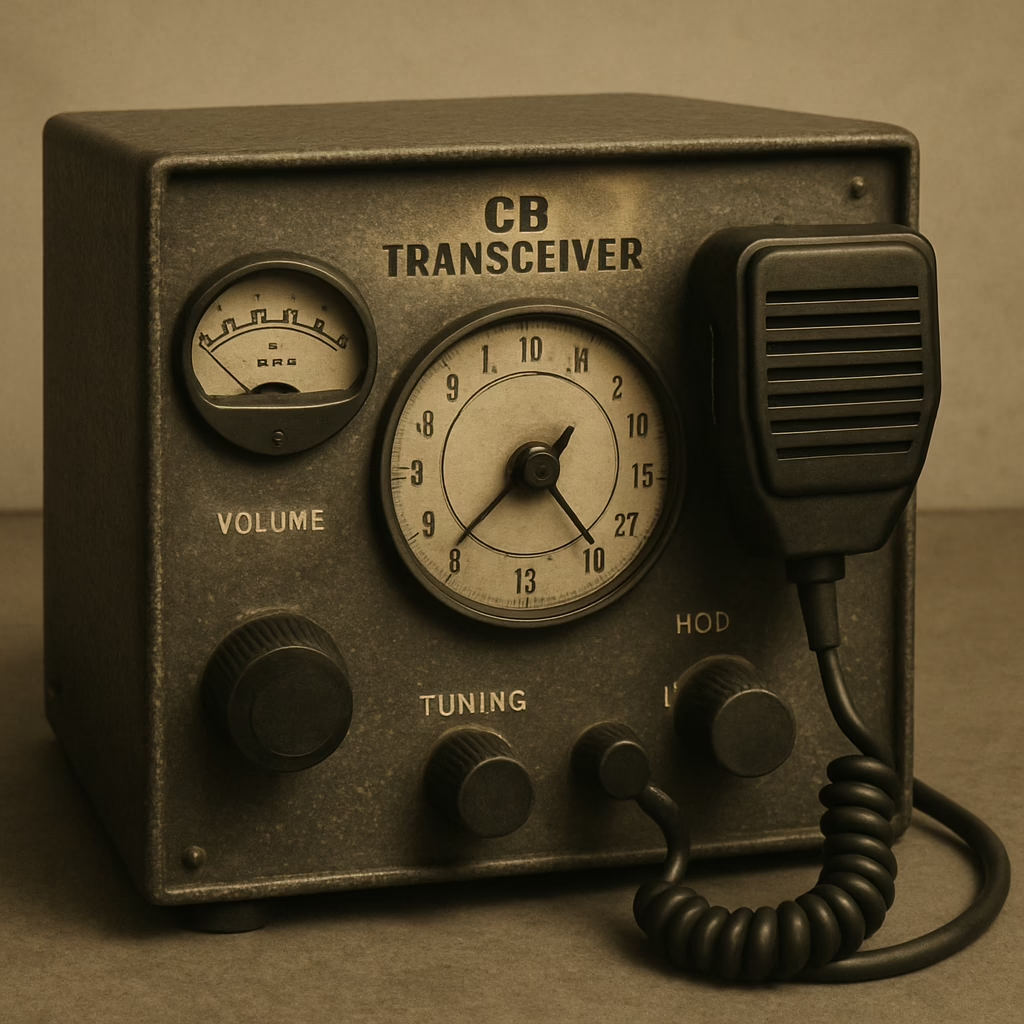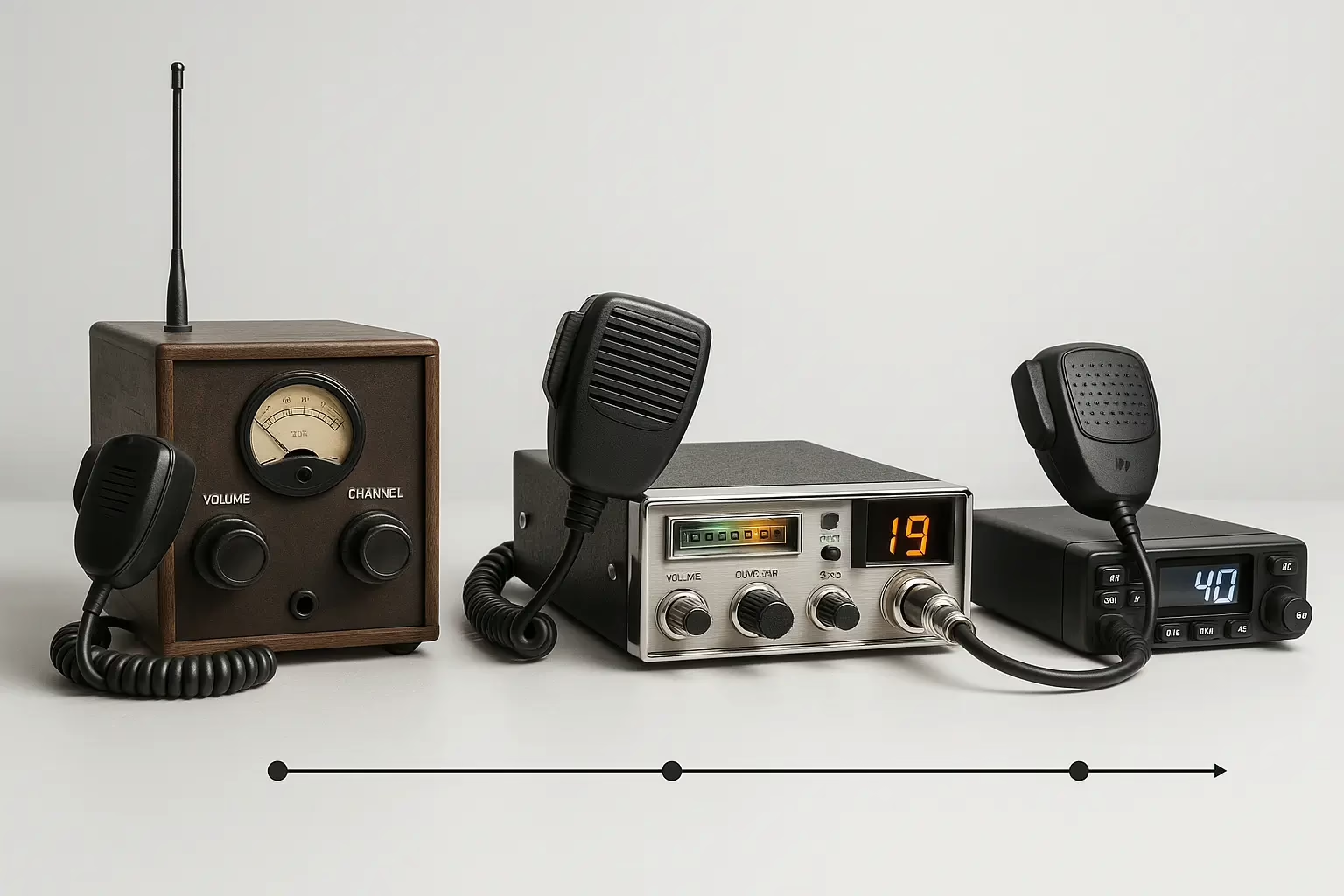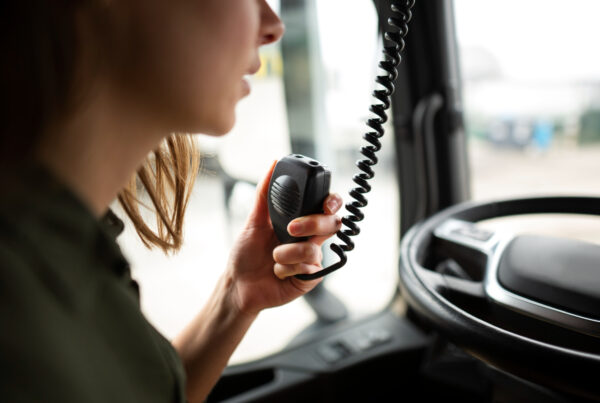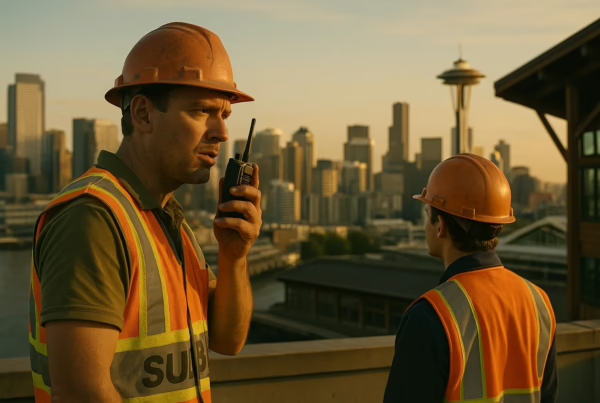The History and Evolution of CB Radios
How Citizens Band Radio Shaped Modern Communication
At Whisler Communications, we provide dependable communication solutions for industries that require clarity, reliability, and consistent coverage. While our modern systems include digital trunking, wide-area networks, and commercial-grade land mobile radios, many of these advancements can be traced back to one of the most impactful communication tools of the last century: the CB radio.
The Origins of Citizens Band Radio

Citizens Band (CB) radio was created by the FCC in 1945 to offer the public an accessible communication service without a specialized license. Early CB radios operated on 23 AM channels within the 27 MHz band until the FCC expanded the service to 40 channels in 1977.
Early CB radios featured simple analog controls, AM-only capability, basic microphones, and fixed channel selection. Although they were limited, they opened the door to personal and small-business radio communication across the country.
CB Radios in American Culture and Trucking
CB radios became essential for truck drivers in the 1970s due to nationwide fuel shortages and the federally mandated 55 mph speed limit. Truckers relied on CB radios to coordinate fuel stops, avoid road hazards, report weather issues, and communicate speed-trap locations.
This era became a defining period for CB culture. Films like Smokey and the Bandit and the chart-topping song “Convoy” helped solidify CB radios in American pop culture. The commonly recognized CB lingo included phrases such as “10-4,” “Smokey,” and “Bear trap,” which became known far beyond the trucking industry.
Today, CB radios remain part of the trucking identity, especially in regions with irregular cellular coverage.
The Evolution of CB Radio Technology
From simple AM units to feature-rich communication devices, CB radios have undergone significant advancements.
Modern CB radios offer capabilities such as digital displays, weather alert channels, noise-canceling microphones, automatic channel scanning, PA system support, and selective Bluetooth connectivity. The FCC’s approval of FM mode in 2021 also introduced improved audio clarity for newer models.
Many higher-end units support SSB (Single Side Band), giving users better range and signal efficiency within FCC power limits of 4 watts AM and 12 watts PEP on SSB. Newer radio designs also integrate advanced filtering, cleaner circuitry, and improved antenna tuning.
Leading CB Radio Brands
The CB radio market continues to be supported by established manufacturers known for reliability and performance. Some of the most trusted brands include Cobra, Uniden, and Midland. These manufacturers produce equipment suited for trucking fleets, recreational off-roading, agricultural operations, and rural communication.
The Role of CB Radios Today
Despite modern communication systems, CB radios remain relevant. Their independence from cellular infrastructure makes them valuable in areas with weak or no signal.
Today, CB radios are widely used for trucking communication, off-road and outdoor adventures, rural and agricultural operations, emergency preparedness, and community coordination. Their consistency and zero subscription cost give them a unique advantage that keeps them in active use nationwide.
Choosing the Right CB Radio
Key factors to consider when selecting a CB radio include AM versus AM/SSB capability, audio clarity, weather alert features, built-in SWR meters, antenna compatibility, noise reduction, and long-term reliability. Whether for professional or recreational use, choosing a high-quality unit ensures dependable performance.
The Enduring Legacy of CB Radios
CB radios have shaped communication technology for nearly 80 years. Although Whisler Communications specializes in advanced two-way radio systems and wide-area digital networks, the influence of CB radio remains foundational. Their legacy can be seen in the communication standards, reliability requirements, and system structures that define modern radio technology.
CB radios continue to serve as dependable tools for direct person-to-person communication, proving their relevance in an increasingly digital world.




